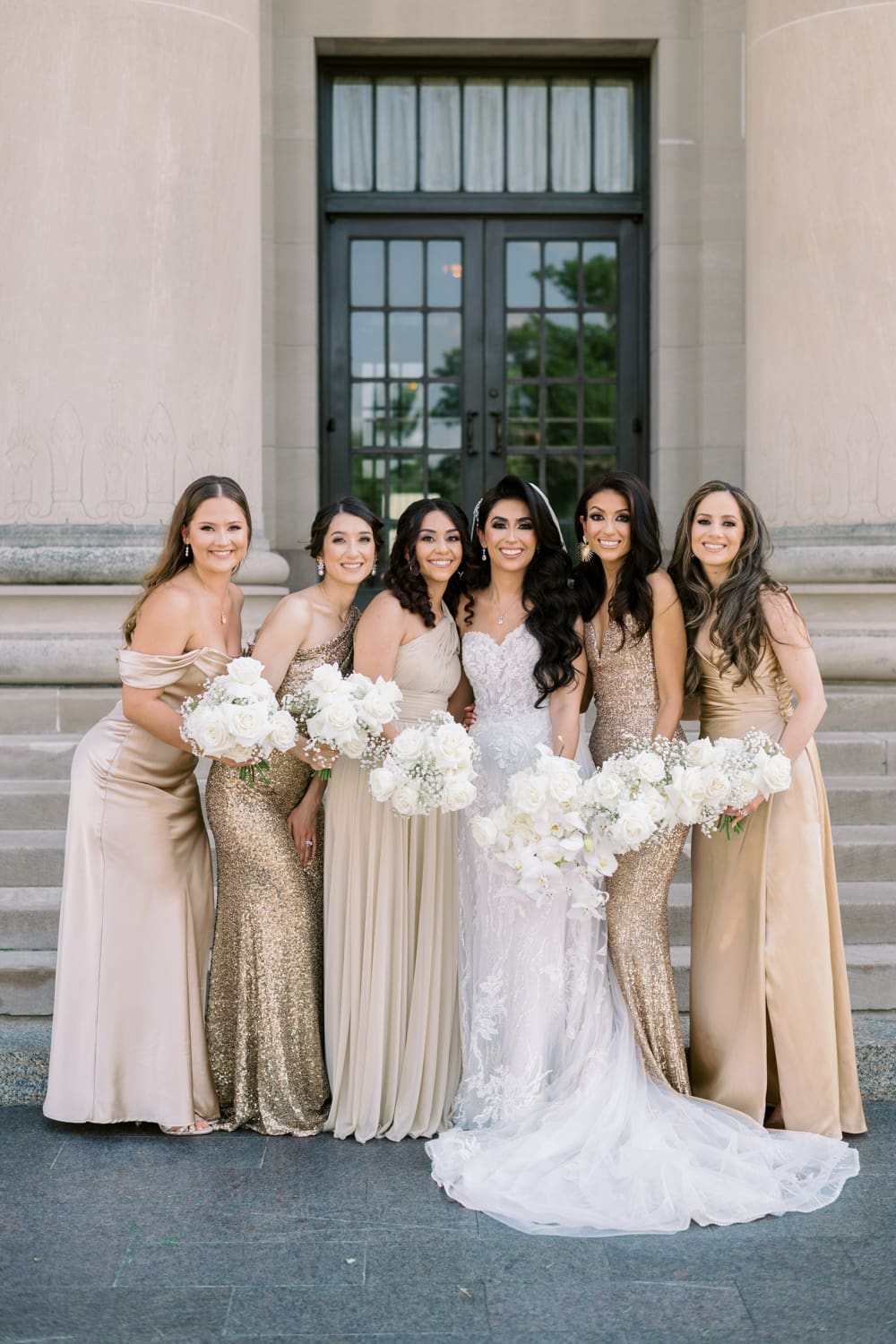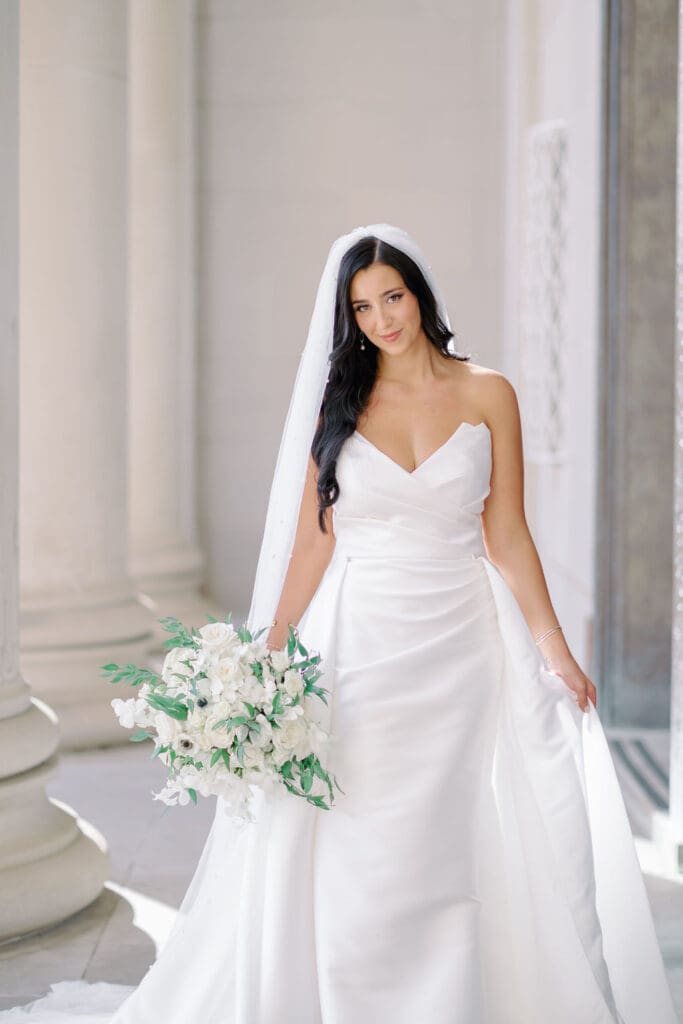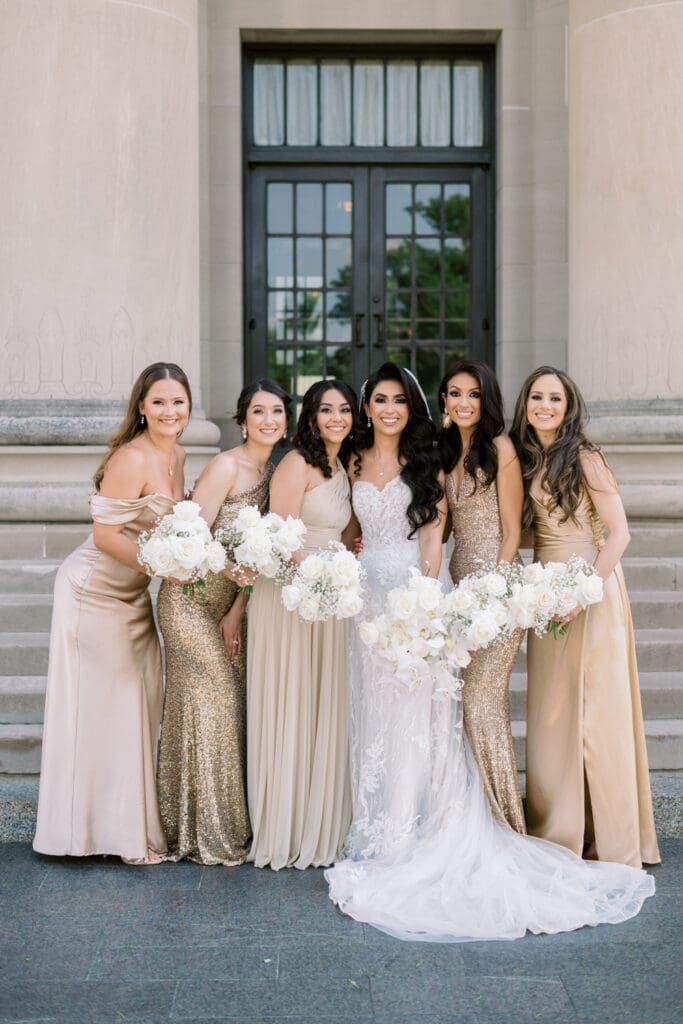A fine art wedding is elegant, timeless, and meticulously designed, with a focus on soft, romantic details and a refined aesthetic. Achieving a fine art style for your wedding requires careful planning and intentional choices that come together to create a sophisticated atmosphere. Here’s how to incorporate fine art elements into your wedding day, from venue selection to guest wardrobe participation.
Venue Selection
The right venue sets the tone for a fine art wedding. Look for a venue with a classic, timeless aesthetic that exudes elegance—think historic estates, grand ballrooms, art galleries, or even beautiful outdoor gardens. Venues with natural light and clean architectural lines are ideal, as they allow the soft, natural elements of your wedding to shine through. The venue should feel cohesive with the romantic, elevated vibe you’re aiming for, and it’s important to think about how the space will work with the decor and color palette you envision.
Color Palette
A refined color palette is key to achieving a fine art look. Opt for soft, muted tones and pastels, such as blush, ivory, sage, soft blue, or dove gray. These colors create an understated yet romantic feel that works beautifully in both indoor and outdoor settings. If you want to add a touch of drama, deeper hues like navy, burgundy, or emerald green can be incorporated in small accents like stationery, florals, or bridesmaids’ dresses. The goal is to keep everything cohesive, avoiding overly bright or bold colors that can detract from the sophisticated mood you’re curating.
Floral Design
Floral design plays a major role in fine art weddings. To achieve that romantic and ethereal look, opt for lush, organic arrangements with soft, flowing elements. A mix of soft blooms like peonies, garden roses, and ranunculuses creates a dreamy, classic feel, while greenery like eucalyptus or olive branches adds an elegant touch. Think of your florals as a work of art—arranged thoughtfully with an emphasis on movement and texture, rather than symmetry. Floral installations—such as arches, hanging arrangements, or centerpieces—can elevate your space and add a romantic focal point to your ceremony or reception.
Bridal Party Attire
For a fine art wedding, bridal party attire should complement the soft, elegant aesthetic. Bridesmaids’ dresses should be made from luxurious fabrics like silk, chiffon, or satin, and the cuts should be timeless and flattering. Think about dresses in neutral tones or delicate pastels with simple, classic silhouettes. For the groomsmen, consider suits in light gray, navy, or charcoal, paired with crisp white shirts and elegant ties. A well-tailored look will add to the overall refined appearance. The bride’s dress should embody classic beauty—something with delicate lace, soft tulle, or intricate beading for an added touch of elegance. Avoid trends that may feel too modern or bold, and instead opt for a gown that has a timeless and couture feel.
Guest Wardrobe Participation
While your fine art wedding should focus primarily on your vision, encouraging your guests to follow the dress code can add an extra layer of elegance to the overall aesthetic. Consider suggesting semi-formal or black-tie attire for your guests to elevate the vibe of the event. You could include a note on the invitation or wedding website encouraging guests to wear soft neutrals or elegant shades that won’t overpower the delicate color palette. While you don’t want to restrict guests too much, subtle guidelines will ensure that the overall look of the wedding remains cohesive and sophisticated.
The Bottom Line
Achieving a fine art style for your wedding requires careful attention to detail and a commitment to timeless elegance. By selecting the right venue, choosing a soft, refined color palette, and curating floral designs and attire that reflect classic beauty, you’ll set the stage for a truly stunning celebration. The fine art wedding style focuses on quality over quantity, creating an elevated and romantic experience for you and your guests.


